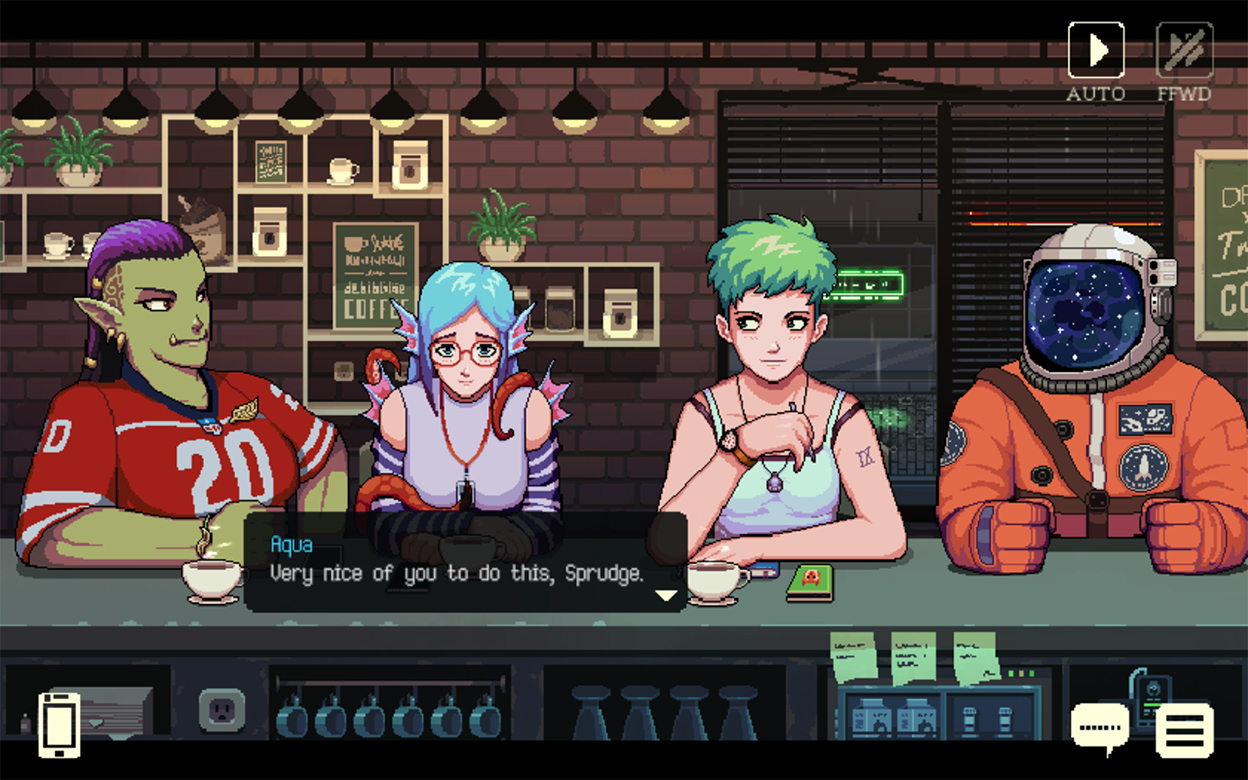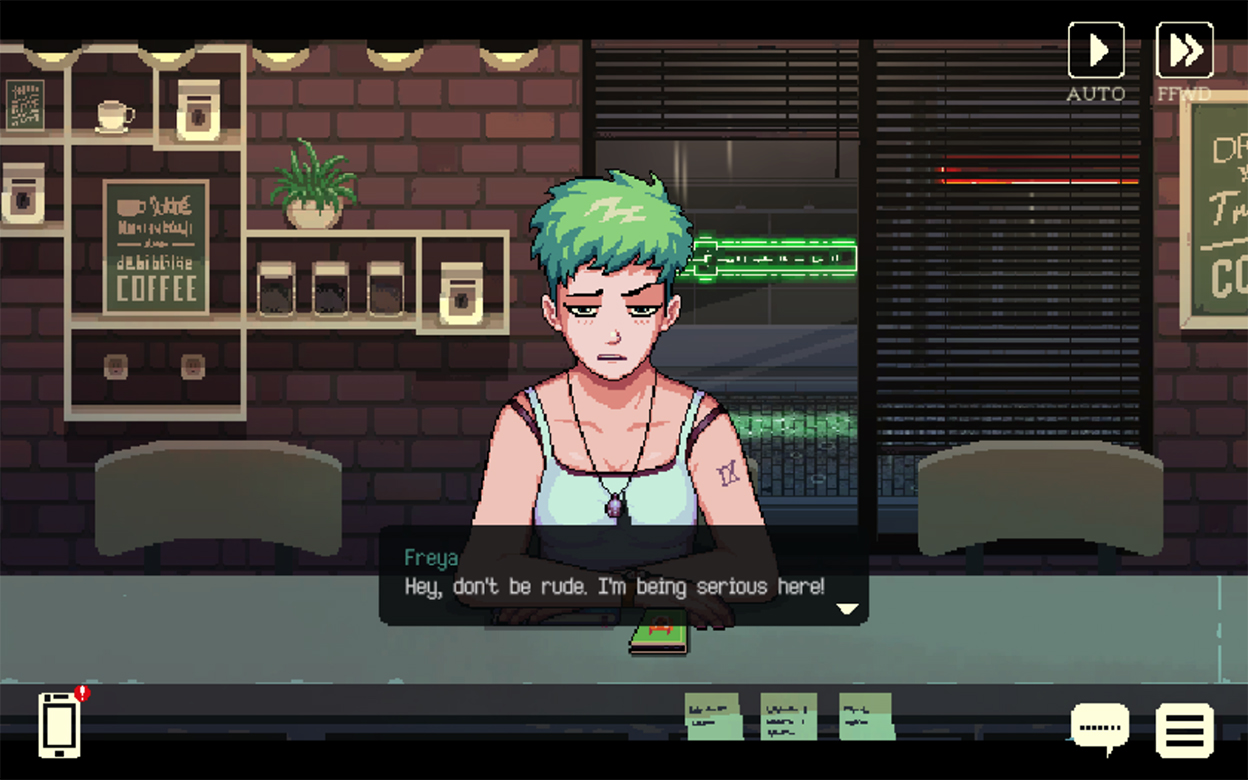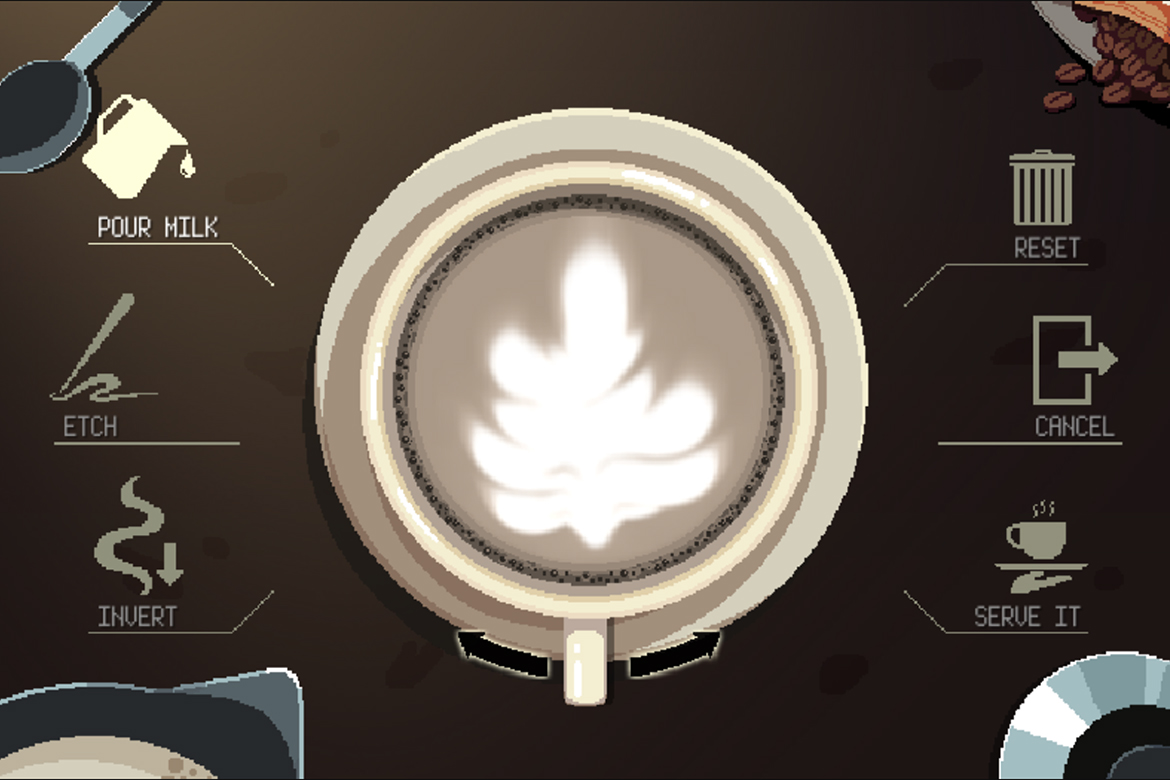
Video games have this magical ability to transport people to completely different worlds from the ones they are currently inhabiting. Sure, maybe in the real world you share a single bathroom with your three roommates, but if the video game world you could be Lionel Messi nutmeggin’ defenders in front of 100,000 adoring fans or Lara Croft raiding tombs in far off places.
But what if the world you wanted to be transported to was one not so farfetched? What if you just wanted to chat and make coffee for people? Well, there’s a game for that. It’s called Coffee Talk.
Created by Indonesian indie game developer Toge Productions, Coffee Talk is a narrative game filled with “quiet conversations and good company,” which sounded cute two years ago when the 13-minute demo dropped, but today feels like an essential balm for these isolated times. Now the full version is available, and in the name of journalism, we played it.
And it’s maybe kinda good? Read on.

The game is set in the year 2020 in an alternate version of Seattle, one where elves, vampires, werewolves, orcs, aliens, nekomimi (or catgirls), demons, and humans all coexist peacefully (mostly). You play as the owner and sole proprietor of Coffee Talk, a 90’s era coffee shop that keeps odd hours—mostly at night—and doesn’t seem to accept any form of payment. Not much is revealed about who you, the coffee shop owner, really are, other than the simple fact you run the joint, and can name yourself whatever you want. We went with “Sprudge”.
The gameplay comes in one of two modes: conversing with patrons and making drinks. The conversations are very much on rails; there’s no decision-making on your part as to which reply your character will give in any one conversation. You just sit back and let the banter happen. Conversation topics deal with everything from work to relationships to war and PTSD to racism. This part of the game can feel clunky at times. There’s a lot of calling people pervs, which is kind of a weird choice.

Your main source of dialogue comes with your regularest of regulars and frequent verbal sparring partner Freya, a human journalist who is writing a book based on all the conversations she hears at your cafe. She’ll normally come in for an espresso she doesn’t ever pay for and to work on her book, which means she’s always around to join in on a conversation between, say, an elf and a succubus having relationship troubles, or a vampire and a werewolf who are old friends, or a socially inept alien organism looking to mate. As you meet more people, they become you friends on Tomodachill, a Facebook-like app on your character’s phone. The more they come in, the more about their backstory gets filled out in the app.
But the real fun in the game—at least for someone like me, who requires some sort of objective in their gameplay—comes from the drink making. When it comes to drink ordering, your customers are generally terrible. Save for the occasional latte or warm glass of milk, they have no idea what they want, and often fail at being forthcoming enough with information for you to properly make their drink. So you have to get creative. Using an increasing list of ingredients, you have to craft drinks with up to three ingredients, and the order of the components matters. While some are straightforward—coffee, coffee, coffee is an espresso; coffee, coffee, milk is a cappuccino; and coffee, milk, milk is a latte—other drinks require a little experimentation and trial and error. If someone orders, say, a ginger latte, is that coffee, ginger, milk or coffee, milk, ginger? You’ll only know after you serve it. And the disappointment on their faces when you get it wrong is crushing.

Is this… latte art?
And like any modern 2020 cafe, in Coffee Talk there is latte art and you have to pour it. Well, you don’t have to pour it, but what’s the point of playing a video game if you’re just going to fast travel through facing off with the bad guy? Now, the bona fide latte arteests out there will most likely find the game’s pouring mechanics to be a bit frustrating at first, because they don’t really correspond to real-world free pours. Have you ever watched a really good guitar player attempt Guitar Hero? It’s kinda like that but for rossettas. As someone whose latte art skills begin and end with “sad, dying wheat,” this leveling of the playing field suited my abilities nicely.
It’s pretty easy to get lost in the latte art. In every other part of the game there really aren’t any redos; you can’t go back on conversations, and you only get a set number of drinks you can dump each chapter, but latte art is something you can pour and repour and repour indefinitely until you are happy with the results. I maybe spent something like an hour just pouring latte art (please don’t tell @wastingcoffee).
Overall, the uncontrollable, sometimes-cringy dialogue (which, if that isn’t a real-life cafe conversation simulator, then I just don’t know what is) is more than made up for by the small moments of drink prep and latte art. The biggest complaint is that there simply weren’t enough opportunities to let the best parts of the game shine; it sometimes felt like a slog to get through the conversations just so I could take another crack at finally figuring out Gala’s Fury remedy. But at the very reasonable $12.99 price tag, putting the total runtime at about one dollar per hour, Coffee Talk is easily worth the price of admission. Especially if you are really, really missing going to or working in a cafe right now.
Overall score: 3.25 bad latte art pours out of 5.
Coffee Talk is available for Mac and Windows as well as on Steam.
Zac Cadwalader is the managing editor at Sprudge Media Network and a staff writer based in Dallas. Read more Zac Cadwalader on Sprudge.

